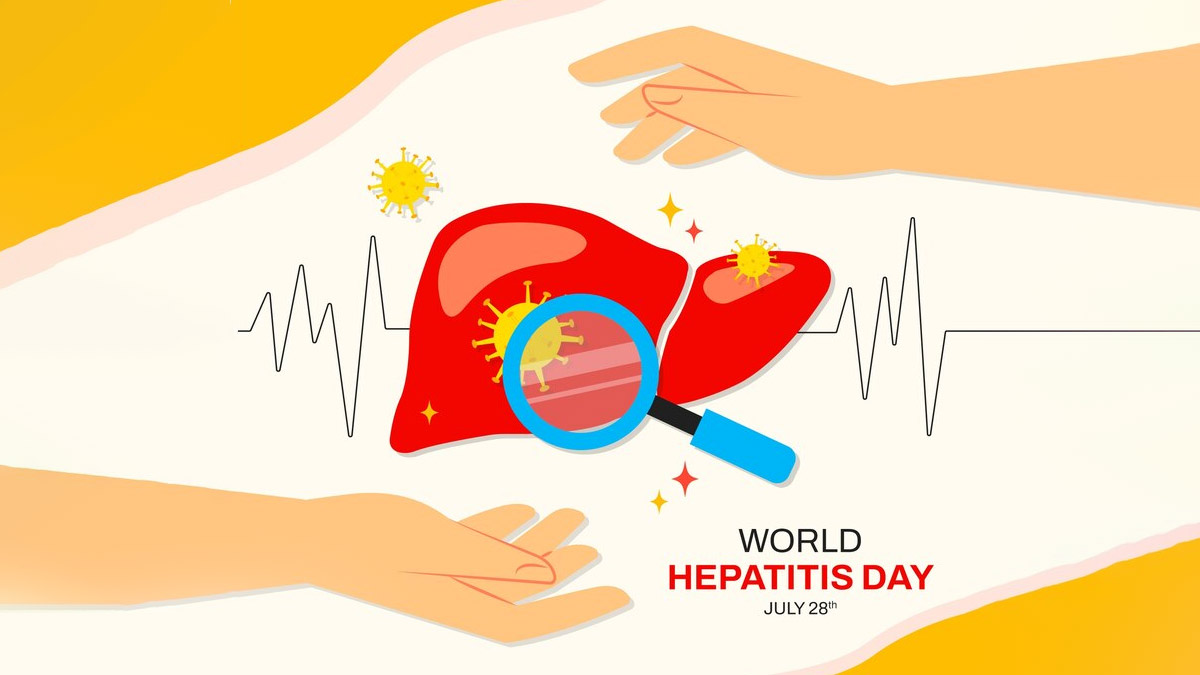
World Hepatitis Day is observed on July 28 each year to raise awareness about hepatitis, a condition that causes inflammation of the liver, and to educate people on the importance of testing and prevention through vaccination.
Table of Content:-
However, despite the accessibility of information today, many remain uninformed about infectious diseases like hepatitis and their modes of transmission. In an interaction with the OnlyMyHealth team, Dr Vijay Kumar H J, Consultant Gastroenterologist, Apollo Clinic, HSR Layout, sheds light on the different ways hepatitis can spread and ways to prevent it.
Different Types Of Hepatitis

Hepatitis is an inflammation of the liver that is primarily caused by the hepatitis viruses. There are five main types of hepatitis viruses called types A, B, C, D, and E.
Worldwide, an estimated 35.4 crore people live with hepatitis B or C, according to the World Health Organization (WHO).
The good news is that some types of hepatitis viruses are preventable through vaccination. In fact, a WHO study suggests that an estimated 40.5 lakh premature deaths could be prevented by 2030 through vaccination, diagnostic tests, medicines, and education campaigns.
How Hepatitis Spreads
The mode of transmission for different types of hepatitis viruses may vary.
Hepatitis A is contracted through contaminated food or water. It is most common in low- and middle-income countries with poor sanitary conditions and hygienic practices, says the WHO, adding that about 90% of children have been infected with the hepatitis A virus before the age of 10 years, most often without symptoms. However, when symptoms do occur, they include fever, fatigue, and jaundice.
Also Read: Alert Issued in Kerala After Hepatitis A Outbreak; How Does Hepatitis A Get Transmitted?
Hepatitis B infection can be acute or chronic. The WHO shares that the infection can transmit from mother to child at birth or through exposure to infected blood, especially from an infected child to an uninfected child during the first five years of life.
Other ways hepatitis B can spread include needlestick injury, tattooing, piercing, and exposure to infected blood and body fluids, such as saliva and menstrual, vaginal, and seminal fluids. "Sexual transmission is more prevalent in unvaccinated persons with multiple sexual partners," the global health body highlights. To identify the infection, keep an eye out for symptoms, such as joint pain and jaundice.

Hepatitis C is mainly spread through blood contact, often from shared needles, says Dr Kumar. “It often remains asymptomatic initially but can cause severe liver damage,” he adds. An estimated five crore people have chronic hepatitis C virus infection, with about 10 lakh new infections occurring every year, according to the WHO.
Hepatitis D is caused by HDV (hepatitis D virus), also known as a 'satellite virus, as it can only infect people who are also infected by hepatitis B, according to the US Centers for Disease Control and Prevention (CDC). Symptoms usually include yellow skin, nausea, joint pain, tiredness, and dark or clay-coloured urine.
Hepatitis E affects an estimated two crore people worldwide, with an estimated 30.3 lakh symptomatic cases. Dr Kumar says that it spreads through contaminated water, causing jaundice and fatigue, and is prevalent in regions with poor water quality.

Bottomline
When it comes to preventing hepatitis, Dr Kumar shares preventive measures to adopt, which include practising good hygiene, having safe sex, and avoiding needle sharing. He says that vaccines are available for hepatitis A and B viruses. In addition, antiviral medications can help manage chronic hepatitis B and C.
Also watch this video
How we keep this article up to date:
We work with experts and keep a close eye on the latest in health and wellness. Whenever there is a new research or helpful information, we update our articles with accurate and useful advice.
Current Version